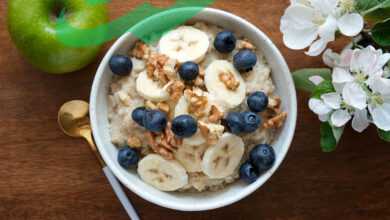Top 10 High Phosphorus Foods to Boost Your Health
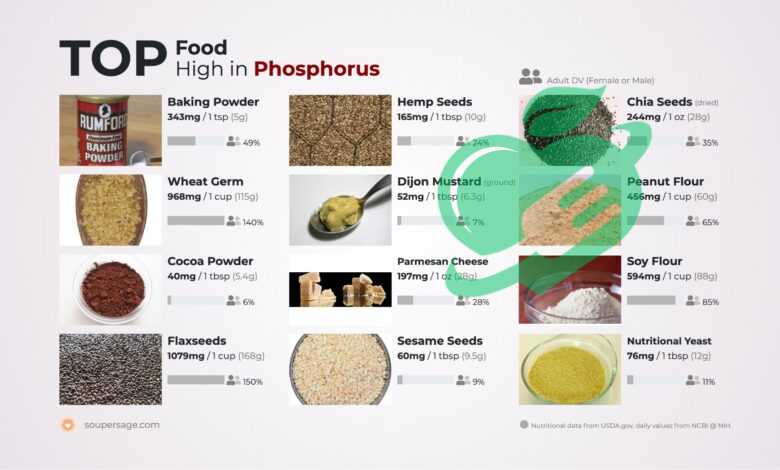
Understanding Phosphorus in Your Diet
Phosphorus Foods is a vital mineral that plays several crucial roles in maintaining overall health. Often overshadowed by calcium in conversations about bone health, phosphorus is equally significant. It is primarily found in the body in two forms: organic and inorganic, with the former being part of various bodily molecules, including DNA and RNA, while the latter contributes to the mineral composition of bones. Incorporating phosphorus into your diet is easier than you might think. Foods rich in this essential mineral include protein-packed sources like meat, seafood, dairy, and plant-based options. For example, just a serving of salmon can offer a substantial dose of phosphorus – about 570 mg per fillet!
Importance of High-Phosphorus Foods for Health
High-phosphorus foods are not just essential for maintaining adequate levels of this mineral; they also provide a host of health benefits. Here are some reasons why you should consider incorporating them into your meals:
- Bone Strength: Phosphorus works closely with calcium to help develop strong bones and teeth. A balanced intake of both minerals can reduce the risk of osteoporosis.
- Energy Production: Phosphorus plays a significant role in energy metabolism. It’s a key component of ATP (adenosine triphosphate), which is the energy currency of our cells.
- Cellular Function: The mineral is crucial for DNA and RNA synthesis, ensuring that your body can create and maintain healthy cells. 1
To put it simply, phosphorus is the unsung hero of your diet. Ensuring a healthy balance of this mineral can lead to improved energy levels and stronger bones, empowering you to live a vibrant life. So, as we delve deeper into the benefits of high-phosphorus foods, let’s explore how they can enhance your health even further.

Benefits of High-Phosphorus Foods
One of the most significant benefits of high-phosphorus foods is their impact on bone health. Phosphorus works hand-in-hand with calcium, acting like a dynamic duo that ensures our bones remain strong and resilient. Nearly 85% of the phosphorus in the body is found in bones and teeth. Consider this: a typical serving of dairy, such as a cup of yogurt, contains about 300 mg of phosphorus. Pair that with a serving of almonds, and you’ve effectively fortified your diet for optimal bone strength! Key points to consider:
- Bone Density Maintenance: Adequate phosphorous levels correlate with improved bone density. This is crucial as we age and become more susceptible to osteoporosis.
- Regulating Calcium Levels: Phosphorus assists in managing calcium levels in the body, creating a perfect balance that promotes overall skeletal health.
Boosting Energy Levels
Feeling sluggish? A diet rich in phosphorus may just be what you need to jumpstart your energy levels. Phosphorus is essential for the metabolism of carbohydrates and fats, which means it plays a pivotal role in converting the food we eat into usable energy. Think of phosphorus as your body’s energizer:
- ATP Production: Phosphorus is a key component of ATP (adenosine triphosphate), the molecule responsible for storing and transferring energy within cells. More phosphorus means more energy!
- Endurance Support: For those who lead an active lifestyle or participate in regular workouts, incorporating phosphorus through foods like quinoa or lean meats can aid in quicker recovery and enhance stamina. 1.
Incorporating high-phosphorus foods into your meals not only strengthens your bones but also fuels your daily activities with the energy needed to thrive. As we continue exploring more benefits, let’s dive into the potential risks associated with phosphorus intake to keep your well-being in check.
Read also: Discover the Benefits of Vitamin A for Shiny, Healthy Hair.
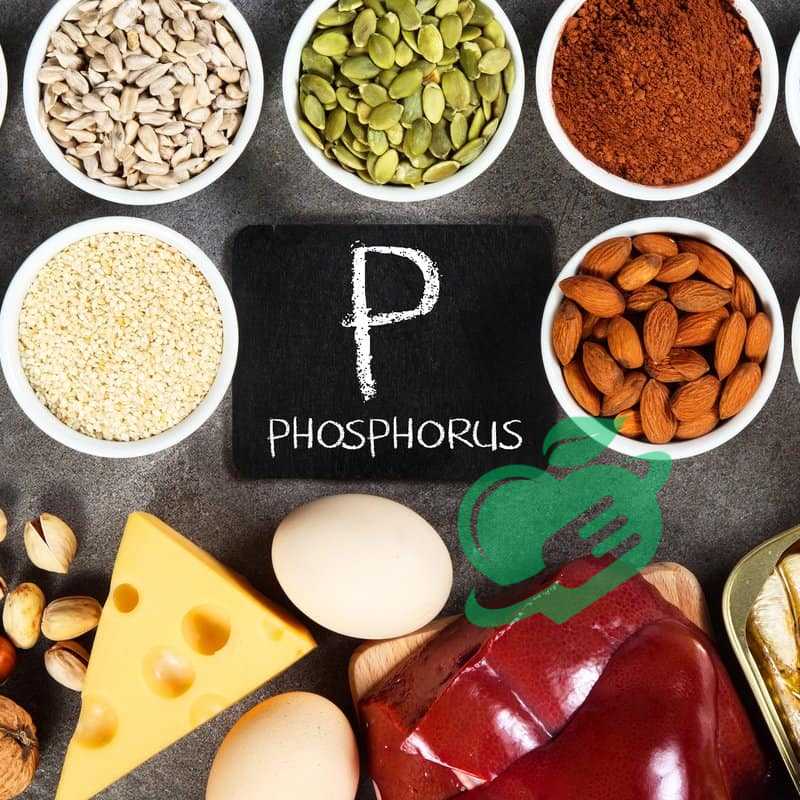
Risks and Considerations
While phosphorus is essential for overall health, it’s important to recognize that excessive phosphorus intake can pose risks, particularly for individuals with kidney issues. The kidneys play a crucial role in regulating the levels of phosphorus in the body. When kidney function is compromised, excess phosphorus can accumulate, leading to a condition known as hyperphosphatemia, which can have serious health ramifications. Imagine being diagnosed with chronic kidney disease (CKD). Suddenly, dietary choices take on new significance. Here’s how high phosphorus can impact kidney health:
- Bone and Mineral Disorder: Elevated phosphorus levels can lead to weakened bones, as the body starts to pull calcium from the bones to balance the excess phosphorus.
- Heart Health Risks: Studies suggest that high phosphorus levels are linked to cardiovascular problems, as they may cause calcification in blood vessels.
For those suffering from kidney issues, it’s vital to monitor phosphorus intake and consult a healthcare provider to ensure a diet that protects kidney health.
Recommended Daily Intake Guidelines
So how much phosphorus should you aim for each day? The recommended daily intake varies depending on age, sex, and life stage. Generally, adults should strive for about 700 mg of phosphorus per day. Here are some guidelines based on different demographics:
- Children (1-18 years): Ranges from 460 mg to 1250 mg based on age.
- Adults (19+) and Pregnant Women: Approximately 700 mg.
- Individuals with Kidney Disease: May need lower amounts, and are typically advised to consult with a healthcare provider.
As with any nutrient, balance is key. Monitoring phosphorus levels while ensuring you meet your nutritional needs will contribute to a healthier lifestyle. Armed with this knowledge about risks and guidelines, the next step is to explore some top high-phosphorus foods to include in a balanced diet.

Top 10 High-Phosphorus Foods
Now that we understand the potential risks of phosphorus and have set guidelines for its intake, let’s explore delicious and nutritious high-phosphorus foods to incorporate into your diet. Here’s a countdown of the top 10 foods that will help you boost your phosphorus levels while enjoying a variety of flavors and textures.
1. Fish (e.g., salmon, tuna)
Fish is a powerhouse of nutrition, and fatty fish like salmon and tuna are particularly high in phosphorus. A 3-ounce serving of salmon can provide around 250 mg of phosphorus, making it a tasty and healthy staple. Plus, it’s rich in omega-3 fatty acids, which are fantastic for heart health.
2. Seeds (e.g., pumpkin, sunflower)
Snack time just got a nutritional upgrade! Seeds like pumpkin and sunflower seeds are raving with phosphorus. A 1-ounce serving of pumpkin seeds can offer about 330 mg. They’re perfect for tossing into salads, yogurt, or simply enjoying as a crunchy snack.
3. Nuts (e.g., almonds, walnuts)
Nuts are not only delicious but also a great source of phosphorus. For example, a 1-ounce serving of almonds contains about 136 mg. They’re ideal for snacking or adding to your morning oatmeal.
4. Dairy (e.g., milk, yogurt)
Dairy products such as milk and yogurt are excellent sources of phosphorus. One cup of yogurt can provide approximately 300 mg. Plus, it supports bone health with a combination of phosphorus and calcium.
5. Legumes (e.g., lentils, chickpeas)
Legumes are a fantastic addition to any diet, packed with plant protein and fibers. A cup of cooked lentils contains around 356 mg of phosphorus. Use them in soups, salads, or stews for a hearty meal.
6. Whole Grains (e.g., quinoa, brown rice)
Whole grains are nutritious champions, and quinoa is particularly high in phosphorus—about 281 mg per cooked cup! These grains not only deliver essential nutrients but also keep you full and satisfied.
7. Lean Meats (e.g., chicken, turkey)
If you eat meat, lean poultry such as chicken and turkey are great phosphorus sources. A 3-ounce serving of chicken can provide approximately 210 mg. It’s versatile for countless recipes, from stir-fries to salads.
8. Soy Products (e.g., tofu, tempeh)
For those following a plant-based diet, soy products like tofu and tempeh are excellent options. A half-cup of tofu can give you around 275 mg of phosphorus, making it a filling and nutritious choice.
9. Shellfish (e.g., shrimp, crab)
Shellfish lovers rejoice! Foods like shrimp and crab are not only delicious but also rich in phosphorus. A 3-ounce serving of shrimp can provide about 300 mg. Add these to your pasta dishes for an upscale twist!
10. Vegetables (e.g., potatoes, broccoli)
Last but not least, vegetables also provide phosphorus! Potatoes, especially, are surprisingly high in phosphorus. A medium baked potato contains about 90 mg, while broccoli packs around 66 mg per cup. They’re perfect for side dishes or thrown into stir-fries. Incorporating a variety of these high-phosphorus foods into your meals can not only enhance your overall health but also keep your diet interesting and satisfying. Now that you have a list to work from, let’s dive into how to easily incorporate these foods into your daily meals and some delicious recipe ideas! 1.
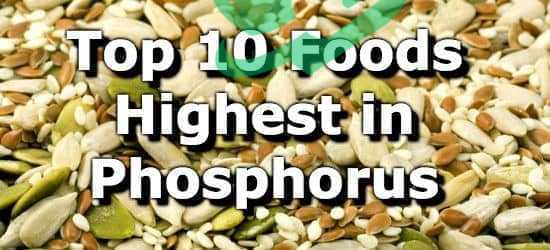
Cooking Tips and Recipes
With a plethora of high-phosphorus foods at your disposal, it’s time to explore some cooking tips and recipe ideas to effortlessly incorporate them into your meals. By easily integrating these nutritious ingredients into your daily diet, you can enjoy their benefits while tantalizing your taste buds.
How to Incorporate High-Phosphorus Foods in Meals
Here are some practical tips to bring high-phosphorus foods to the forefront of your cooking:
- Start Your Day Right: Add seeds and nuts to your morning oatmeal or yogurt. You can sprinkle some pumpkin seeds or sliced almonds for a crunchy texture and nutty flavor.
- Build a Power Salad: Toss a variety of legumes like chickpeas or lentils into your salads for added protein and phosphorus. Pair them with leafy greens, colorful vegetables, and a zinc-rich dressing for extra health benefits.
- Get Creative with Grains: Replace your regular white rice with quinoa or brown rice. Not only will you boost phosphorus intake, but you’ll also enjoy a higher fiber content, which is great for digestion.
- Think Versatile Proteins: Use lean meats, like chicken, in stir-fries, wraps, or stuffed peppers. These options are delicious and provide a healthy dose of phosphorus.
Read also: The Ultimate Guide to Bhringraj: How This Herb Can Transform Your Health. 1
Delicious Recipe Ideas for a Balanced Diet
Here are a couple of easy, delicious recipes that highlight high-phosphorus foods: Quinoa Salad with Chickpeas and Veggies
- Ingredients: 1 cup cooked quinoa, 1 cup canned chickpeas (rinsed), diced bell peppers, cherry tomatoes, parsley, and lemon dressing.
- Instructions: Mix all the ingredients (keep the quinoa cooled). Drizzle with lemon dressing and serve chilled.
Baked Salmon with Broccoli
- Ingredients: 2 salmon fillets, 2 cups broccoli florets, garlic, olive oil, lemon, salt, and pepper.
- Instructions: Preheat the oven to 400°F (200°C). Place salmon and broccoli on a baking sheet. Drizzle with olive oil, sprinkle garlic, salt, and pepper. Bake for 20 minutes, squeeze fresh lemon juice before serving.
These recipes make it easy to enjoy high-phosphorus foods while ensuring a balanced and delightful diet. Not only do they provide essential nutrients, but they are also quick and easy to prepare, making healthy eating a breeze. As you embrace these cooking tips, let’s continue our journey into understanding the role of phosphorus supplements and alternatives for those who may need them.

Supplements and Alternatives
As we explore the world of phosphorus, it’s essential to dive into the topic of phosphorus supplements and alternative sources, especially for those who may struggle to meet their daily requirements through food alone.
Phosphorus Supplements
Phosphorus supplements are available for individuals who need an extra boost. These supplements come in various forms, including capsules, tablets, or powders, and can be beneficial for certain populations, such as athletes, individuals with specific health conditions, or those with dietary restrictions. However, it’s important to approach supplementation with caution. Here are some key points to consider:
- Consult Your Healthcare Provider: Before adding any supplements to your routine, it’s crucial to check with a healthcare professional to determine whether supplementation is necessary and to discuss appropriate dosages.
- Monitor Levels: Over-supplementing phosphorus can lead to issues, particularly for those with kidney concerns. Regular monitoring is critical to avoid complications like hyperphosphatemia. 2.
Non-dairy Sources of Phosphorus
For individuals avoiding dairy due to lactose intolerance, dietary preferences, or allergies, don’t fret! Numerous non-dairy sources offer abundant phosphorus. Here are some excellent alternatives:
- Legumes: As highlighted before, lentils and chickpeas are fantastic phosphorus-rich options, providing both nutrition and versatility.
- Whole Grains: Quinoa, barley, and brown rice are not only high in phosphorus but also boast complex carbohydrates and fiber.
- Nuts and Seeds: Almonds, sunflower seeds, and chia seeds make for great snacks, boosting phosphorus intake while providing healthy fats.
- Soy Products: Tofu and tempeh are excellent protein sources, perfect for plant-based diets while delivering a hearty dose of phosphorus.
Incorporating these non-dairy alternatives into your meals ensures a balanced intake of phosphorus, while also accommodating different dietary needs. With this knowledge in hand, let’s turn our attention to the importance of balancing phosphorus intake for optimal health—a vital step in maintaining and thriving with a nutritious diet.
Read also: Unraveling the Mystery: Common Triggers of Painful Urination.
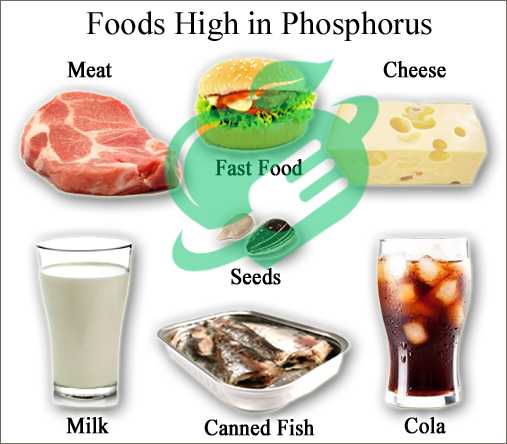
Balancing Phosphorus Intake
As we navigate the nuances of phosphorus in our diet, balancing phosphorus intake becomes crucial for maintaining good health. Whether you’re aiming for optimal bone health, managing energy levels, or navigating kidney concerns, ensuring that your phosphorus levels are just right is essential.
Monitoring Phosphorus Levels
Monitoring your phosphorus levels is vital, especially for those with existing health issues or dietary restrictions. Here are some ways to keep track of your intake effectively:
- Food Journaling: Keeping a journal of what you eat can provide invaluable insight into your phosphorus consumption. Apps or simple notepads work well for tracking your meals and snacks.
- Understanding Labels: Familiarizing yourself with nutrition labels can help you make informed choices. Look for phosphorus content per serving; many packaged foods will provide this information.
- Regular Blood Tests: For individuals with health conditions, regular blood tests may be necessary to monitor phosphorus levels. This allows healthcare providers to adjust dietary recommendations or supplements accordingly. 3
Consulting with a Dietitian
If you’re feeling overwhelmed or unsure about your phosphorus levels, consulting with a registered dietitian can be a beneficial step. Here’s why:
- Personalized Guidance: A dietitian can provide tailored advice based on your health history, lifestyle, and dietary preferences. They can help create a balanced meal plan that meets your phosphorus needs.
- Nutritional Education: They can educate you on the best high-phosphorus food sources while ensuring you avoid any potential pitfalls, especially if you’re managing kidney health.
- Support in Transitioning: Whether you’re switching to a plant-based diet or managing a health condition, having a professional lend their expertise can make the process smoother and more sustainable.
Balancing phosphorus intake is achievable with the right strategies and support. As we close in on our discussion, let’s address some frequently asked questions about high-phosphorus foods to further clarify any lingering uncertainties.
Read also: A Nutritional Face-Off: Greek Yogurt Versus Regular Yogurt.

FAQs about High-Phosphorus Foods
As we wrap up our exploration into high-phosphorus foods, it’s essential to address some common questions that arise regarding their consumption. Understanding these queries can help clarify your approach to incorporating these foods into your diet.
Can You Overdo Phosphorus Intake?
Yes, it is indeed possible to overdo phosphorus intake, particularly when relying heavily on supplements or consuming a diet high in processed foods. While phosphorus is vital for numerous bodily functions, excessive levels can lead to complications such as:
- Hyperphosphatemia: This condition occurs when phosphorus levels become too high in the blood, potentially leading to weakened bones and cardiovascular issues.
- Kidney Stress: For individuals with kidney problems, the body may struggle to filter excess phosphorus, causing further health risks.
- Bone Weakness: Elevated phosphorus can draw calcium from the bones, increasing the risk of osteoporosis. 4
To stay on the safe side, aim for a well-rounded diet and consult your healthcare provider if you have concerns about your phosphorus intake.
Are High-Phosphorus Foods Suitable for Everyone?
While high-phosphorus foods offer multiple health benefits, they may not be suitable for everyone. Consider the following factors:
- Kidney Health: Individuals with chronic kidney disease (CKD) must monitor their phosphorus intake closely since their kidneys may not effectively regulate phosphorus levels.
- Dietary Preferences: Those following a vegan or vegetarian lifestyle should focus on plant-based sources of phosphorus, ensuring a balanced intake without relying on animal products.
- Age and Activity Level: Different populations may have varying phosphorus needs. Athletes, growing children, and pregnant women might require more phosphorus, while older adults may need to be more cautious. 5
By understanding your unique health situation and dietary needs, you can make informed decisions about incorporating high-phosphorus foods into your meals effectively. As we navigate the myriad of dietary choices available, let’s round things off with some lifestyle tips for optimal phosphorus absorption that will further enhance your nutrition journey.
Read also: Boost Your Health: Combatting Vitamin K Deficiency

Lifestyle Tips for Optimal Phosphorus Absorption
As we continue our journey to maximize the benefits of high-phosphorus foods, it’s essential to consider lifestyle factors that can enhance phosphorus absorption in the body. By adopting a holistic approach, you can ensure that your body effectively utilizes this crucial mineral.
Importance of Vitamin D
Vitamin D plays a critical role in phosphorus metabolism, and ensuring you have adequate levels of this vitamin can significantly enhance your body’s ability to absorb phosphorus. Here’s why it’s essential:
- Enhanced Absorption: Vitamin D helps regulate calcium and phosphorus levels in the bloodstream, making it easier for your body to absorb these minerals efficiently.
- Natural Sources: Spend some time in the sun, as your body synthesizes vitamin D through sun exposure. Additionally, consider incorporating foods rich in vitamin D, such as fatty fish, fortified dairy alternatives, and egg yolks.
- Supplementation: If you’re unable to meet your vitamin D needs through food or sunlight, talk to your healthcare provider about the possibility of supplementation, especially during the winter months. 1.
Physical Activity Recommendations
Staying physically active not only benefits your overall health but also enhances the body’s ability to absorb and utilize phosphorus.
- Exercise Regularly: Engaging in regular physical activity stimulates circulation and improves metabolic processes, facilitating the use of phosphorus in energy production and bone health.
- Strength Training: Incorporating resistance exercises, such as weightlifting or body-weight workouts, can improve bone density and phosphorus utilization, helping to create stronger bones.
- Active Lifestyle: Find opportunities to stay active, whether it’s walking more, taking up a sport, or joining a dance class. Enjoying activities you love can motivate you to remain consistent.
By prioritizing vitamin D intake and maintaining an active lifestyle, you can optimize phosphorus absorption and enhance your overall health. As we conclude this comprehensive guide, embrace the power of nutrient-dense foods and healthy habits to thrive and nourish your body. Remember, every small change can lead to significant health benefits over time!
Read also: Unlocking the Benefits: How Veggies Can Lower Your Blood Pressure.
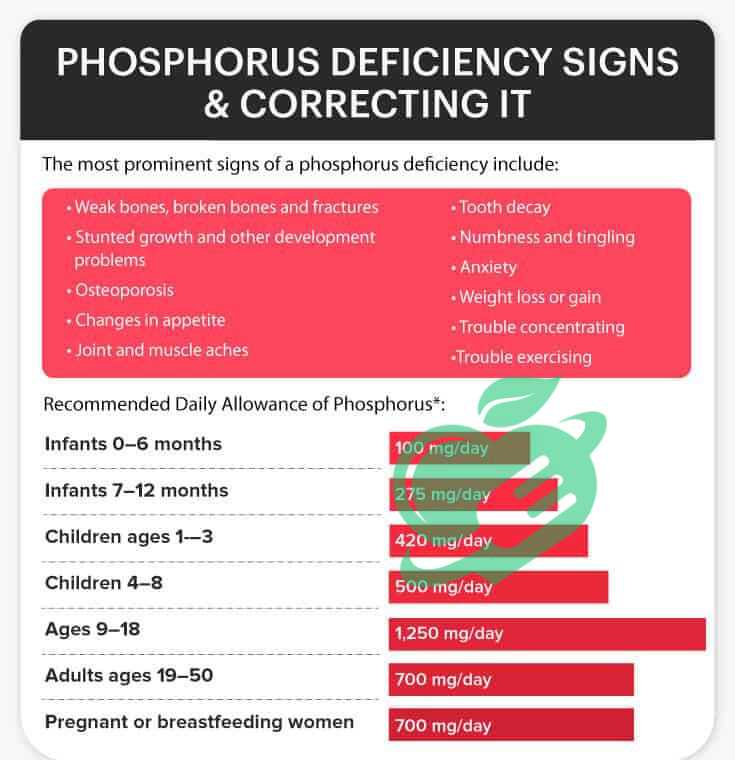
Tips for Maintaining a Balanced Phosphorus-rich Diet
To reap the benefits of high-phosphorus foods while ensuring balanced nutrition, consider the following tips:
- Diversify Your Sources: Focus on various high-phosphorus foods, including lean meats, fish, legumes, nuts, seeds, and whole grains, to create a well-rounded plate.
- Stay Mindful of Serving Sizes: While phosphorus is essential, moderation remains key. Monitor your intake especially if you’re at risk for kidney issues.
- Emphasize Nutrient Pairing: Combines phosphorus-rich foods with sources of vitamin D and calcium for improved absorption and maximum benefits.
- Plan Your Meals: Take the time to plan meals that incorporate these foods, ensuring you’re meeting your phosphorus needs while enjoying delicious, nutritious dishes.
Your body is a mirror of what you eat, so make your food your source of strength and health. Choose with love and awareness what nourishes your body and soul, and be a friend of nature and its colors on your plate, because proper nutrition is the key to a life full of energy and wellness. Follow us constantly, as we strive to provide more useful articles and reliable information that make a difference in your daily life and help you achieve your health goals.
- healthline ((↩))((↩))((↩))((↩))((↩))
- mayoclinic ((↩))
- mountsinai ((↩))
- kidney ((↩))
- healthline ((↩))


